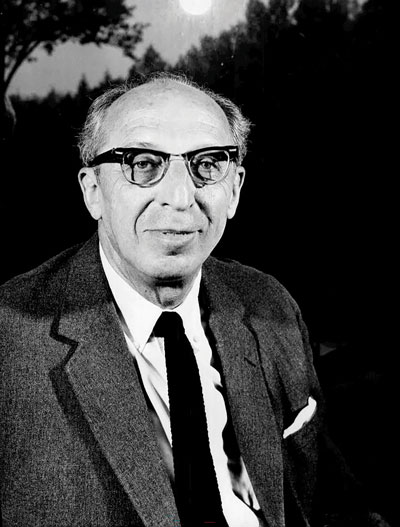Aaron Copland

Born: November 14, 1900, New York, NY
Died: December 2, 1990, North Tarrytown, NY
An Outdoor Overture
- Composed: 1938
- Premiere: December 16, 1938 in New York, NY by the High School of Music and Art Orchestra conducted by Alexander Richter
- Duration: approx. 10 minutes
In 1937, Aaron Copland wrote a 45-minute opera titled The Second Hurricane especially for high school performance. It was premiered in April at the Henry Street Settlement in New York City (Orson Welles designed the production and Joseph Cotten had a speaking roll) and broadcast a month later on CBS Radio, when it was heard by Alexander Richter, head of the music department of the city’s High School of Music and Art. Richter decided that he would like a piece for his school orchestra and convinced Copland to write a work that would inaugurate a campaign with the slogan, American Music for American Youth. “I liked the idea of the High School of Music and Art,” Copland explained, “that gifted students could prepare for their careers in the arts at such a school without sacrificing a general education.” Richter and Copland settled on a piece about ten minutes in length for standard orchestra (“Don’t forget the percussion section!” Richter instructed) that would be in an “optimistic tone which would appeal to the adolescent youth of this country.” In autumn 1938, Copland interrupted orchestrating his ballet Billy the Kid to compose An Outdoor Overture, a title he and Richter chose because of what they felt was the work’s “open‑air quality.” The score was dedicated to the High School of Music and Art, and Richter conducted its premiere with his school orchestra on December 16, 1938.
An Outdoor Overture opens with a grandiose introduction whose motives are developed into a long trumpet solo. The same thematic materials then become the basis of a strongly rhythmic, march-like section, which is abruptly broken off to lead to a lyrical theme introduced by the flute. Another marching melody with what Copland called “more serious implications” follows. A brief recall of the introduction is followed by the trumpet melody, played this time by the strings, before the other themes return in condensed versions. An Outdoor Overture ends in the uplifting spirit with which it began.
— Dr. Richard E. Rodda